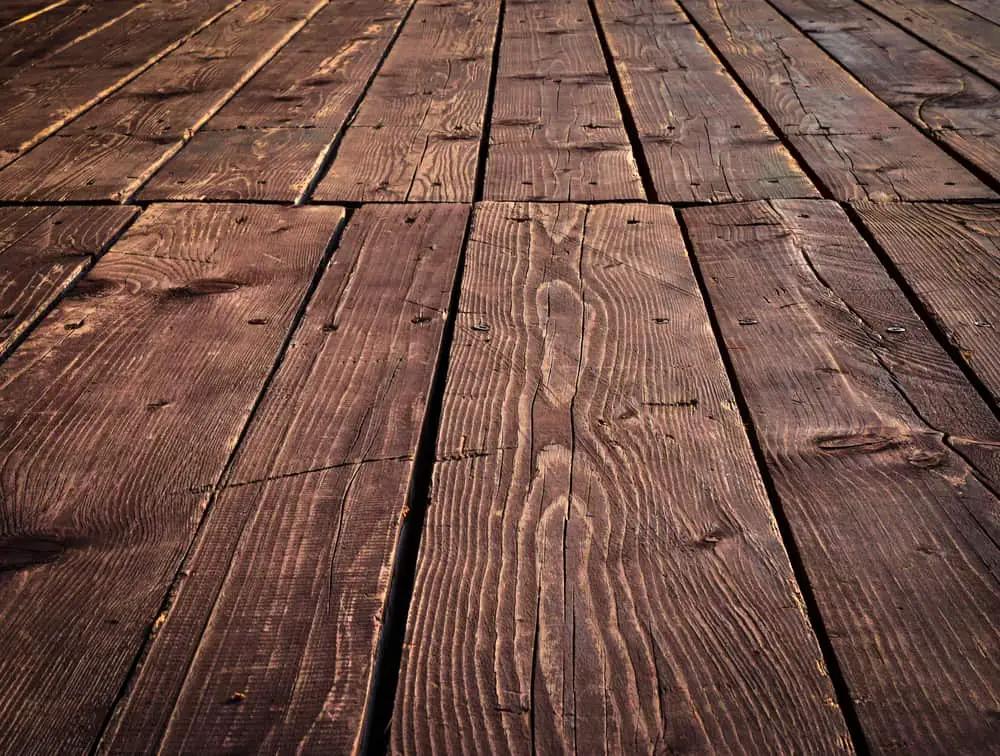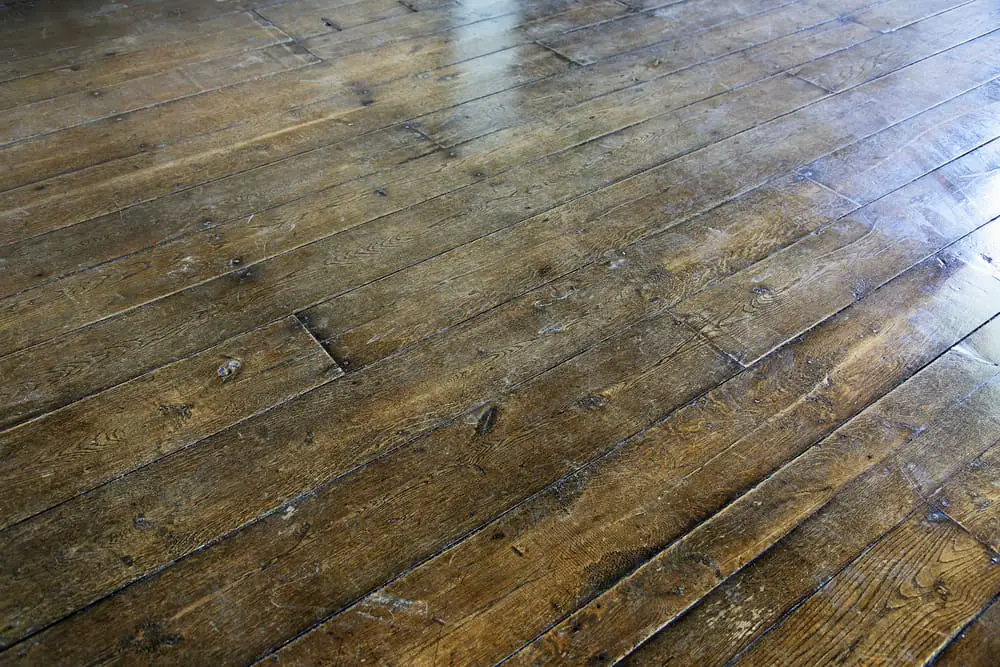A bed bug infestation cannot be completely eradicated unless all the surfaces bugs live on, hide in, and where they lay, eggs are treated. Finding every hiding spot of these dangerous pests can be tricky, and once your know where they are living, you still have to figure out how to kill them in all of their infestation spots. Some of these nooks and crannies aren’t as obvious as others.
After breaking down all of the bedding and mattresses and treating everything with heat and UV light to ensure all household pests are removed, I realized bed bugs could be the black spots on my wooden floors. Upon closer inspection, my wood flooring was harboring bed bugs and also needed to be sterilized.
I knew it wouldn’t be as easy to kill the bed bugs in my wooden floors as it is in mattress seams and pieces of furniture, but I was determined to succeed. Below is the information I used to get rid of bed bugs in wood floors.
Getting Bed Bugs Out of Wooden Flooring?
Once you have found the bed bugs living in your wood floors and other wooden surfaces, you will want to get rid of them. If you are noticing bed bugs on hardwood flooring, then it is likely that the infestation is very bad, and females have most likely been laying eggs for weeks. Since most bed bugs will simply be using the floor to travel from one area of the home to another, regularly mopping with hot water can usually keep wood floors bed bug-free.
After killing the bed bugs on the wood floors, you will want to inspect other wooden pieces, unfinished wood, and wood furniture for other signs of bed bugs. Most importantly, you will need to flip the mattress and look at old bedding and clothes carefully.
When crowding in mattresses occurs, it encourages female bed bugs to head down to the bedroom hardwood floor cracks. These are the bugs in floor cracks you see, and once the eggs are laid, the bed bugs will find a better place to live.
Deciding which method of bed bug removal is best depends on whether or not you have pets and children, as well as the cost and the condition of the wood floor. Special attention should be paid to bed bugs and floor powders that may be toxic to other creatures in the home. Old wood may not survive more aggressive treatments, and replacement should be considered if needed.
Natural Cleaners
There are plenty of natural cleaners and pest control methods that are safer for pets and children to be around than chemical sprays. One of my favorite remedies is diatomaceous earth, which I dust into bed bug-hiding places. Direct contact with the powder kills bed bugs by lacerating and dehydrating them rapidly. The powder is silica-based and food-grade and will not harm anything other than insects if ingested.
Most wood polish oils have citrus and other scents that generally repel pests. The oil in the polish works as a surfactant and suffocates bed bugs. This polish can get into the cracks and crevices of hardwood floors and kill most bed bugs. Other essential oils mixed in that have insecticidal properties, such as peppermint and cinnamon, can increase the effects of the wood polish.
A simple vinegar solution can be used to spray into wood knots and other imperfections in hardwood floors. The vinegar will kill bed bugs on contact and evaporate quickly, leaving no odor or residue. This is a good quick solution if you notice a few bugs or are cleaning up after a serious infestation.
Mixing hot water and essential oils and applying that to wood floors can clean and protect you from pests. The oils will soak into the wood and slip into cracks and gaps in the wood. Any bed bugs living there will die, and most eggs will be rendered inert. Reapply every 10 days or so until no bugs can be seen on the floors.
Household Pesticides
Normal household cleaners can be used to sterilize dirty floors and kill pests hiding inside. Along with the direct contact of chemicals like bleach, the vapors and odor of these chemicals are enough to kill bed bugs in the general area. Over time as the chemicals fade, bed bugs may return, so other methods should be included to keep your floors clean.
Insecticide sprays can be used to kill a variety of insect pests. Once you spray an area, keep children and pets out until the poison has dried and is no longer active. Air the room out to prevent illness by inhalation. The chemicals will kill the bed bugs living in the floor and hopefully any in the room. Some pesticides have a residual effect that may keep bed bugs at bay for several months.
Temperature Treatments
A cost-effective and safe for floors and animals solution is to temperature treat your wooden floors. Bed bugs can only survive in moderate temperature ranges, and extreme temperatures will kill them rapidly. When it comes to changing the climate to kill bed bugs, there are two ways you can go, heat and cold.
Using heat involves getting the temperatures of the floor up to 140 °F and letting the bed bugs cook. This can be difficult to do over an entire floor and so home and professional heat treatments involve heating small areas. A large wood floor full of cracks and holes for bed bugs to hide in can be complicated to treat.
If you go in the other direction, dry ice or frozen carbon dioxide can be used to rapidly freeze a floor. Bed bugs exposed to freezing temperatures of -110 °F will expire quickly and can be treated quickly and effectively. If used correctly, the dry ice will cool the wood but not cause moisture issues. Leaving dry ice for too long can cause warping and discoloration on some wood flooring.
How Likely are Hardwood Floors to Harbor Bed Bugs?

Where fabrics and bedding touch, the floor bed bugs are most likely to be present. Since floors offer very little in the way of warmth, food, and shelter, it is a place bed bugs will go as a last resort. If your wood floor has large gaps and spaces, more bed bugs can hide and lay eggs. Large chips and cracks, and other damage can become nests for bed bugs to spawn.
Once a bed bug lays its eggs, it will likely move to another place to hide and not stay in the wooden floors longer than it needs to. ‘Once a bed bug lays its eggs, it will likely move to another place to hide and not stay in the wooden floors longer than it needs to.
Common Types of Hardwood Floors
Different types of hardwood floors can invite more bed bugs and should be cleaned thoroughly if you have experienced these pests recently. If you have spaces for bed bugs to hide, they will, and if there are no spaces, then they will move on. Wood floors famously have gaps and cracks for bed bugs to hide in and are not the best floor to install if preventing pests is your main objective.
Not all hardwood floors are extra susceptible to bed bugs, and certain treatments can even bug-proof your floor further. Figuring out what aspect of hardwood floors bed bugs like can help you adjust your surfaces to make them inhabitable for these pesky critters. Below are some common types of hardwood floors.
| Floor Type | Bed Bug Movement | Bed Bug Hiding |
| Smooth | Can move across quickly | Nowhere to Hide |
| Sealed | Can move across quickly | Nowhere to hide |
| Natural Grain | Must climb in and out of cracks | Plenty of places to hide |
| Reclaimed | Potential predators and must climb over ridges and grooves | Plenty of places to hide, and may invite other pests into your home |
Cracks
Hardwood floors with more gaps and cracks have more locations for bed bugs to hide and lay eggs. It is also more difficult to clean inside of all the cracks and reach the depths of the knots and grooves that run to the center of the floorboards. More aggressive pest control methods will be needed to treat hardwood floors with cracks.
No Cracks
If sealers, sanding, treatments, or resin have been used to make the cracks in your natural wood visible but not accessible, you can prevent bed bugs from going inside. The seals will keep pests out and prevent any access and egg laying. The wooden floors may still be used by bed bugs that have just entered the home or nose that are looking for a new place to hide and lay eggs.
Will Bed Bugs Dig Inside Hardwood Floors?
There is no way for a bed bug to enter hardwood floors that do not already have cracks. Unlike termites and ants, bed bugs only have a blood-sucking straw-like mouthpiece and cannot chew or bite. With no teeth or mandibles, bed bugs cannot chew in wood and burrow or create their own hiding places.
If there are already cracks in your floor, then bed bugs will simply slip inside to hide and lay eggs. Any gaps between the boards or around the perimeter of the room can be exploited by bed bugs and be used as a den. Since bed bugs cannot dig, sealing all the holes and cracks will effectively stop bed bugs from hiding inside your hardwood floors.



